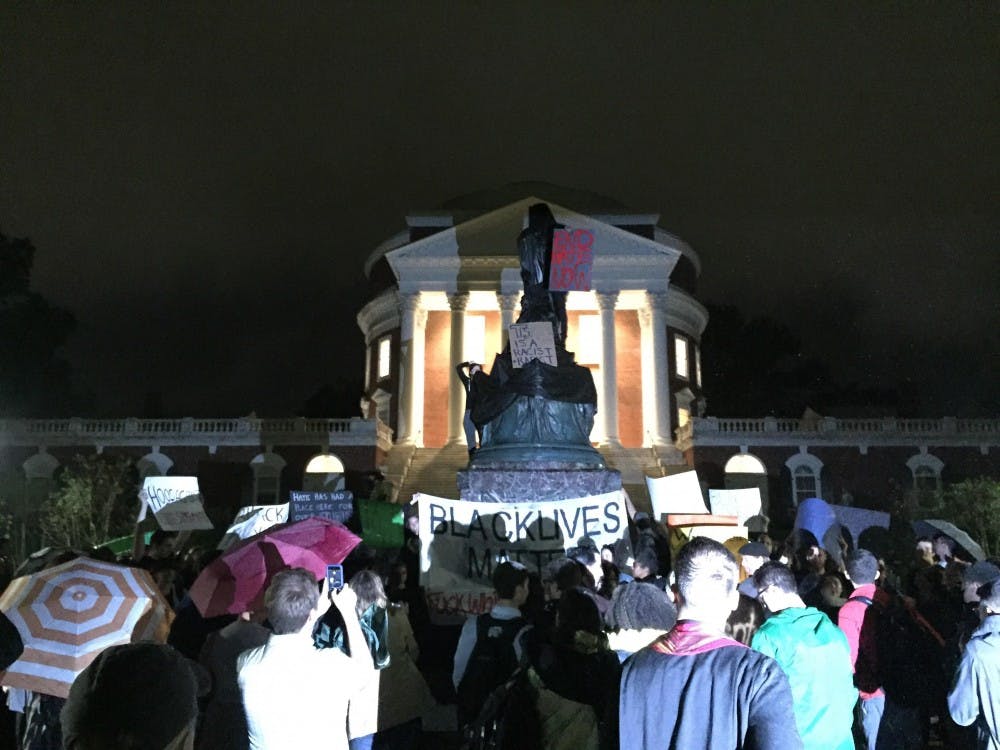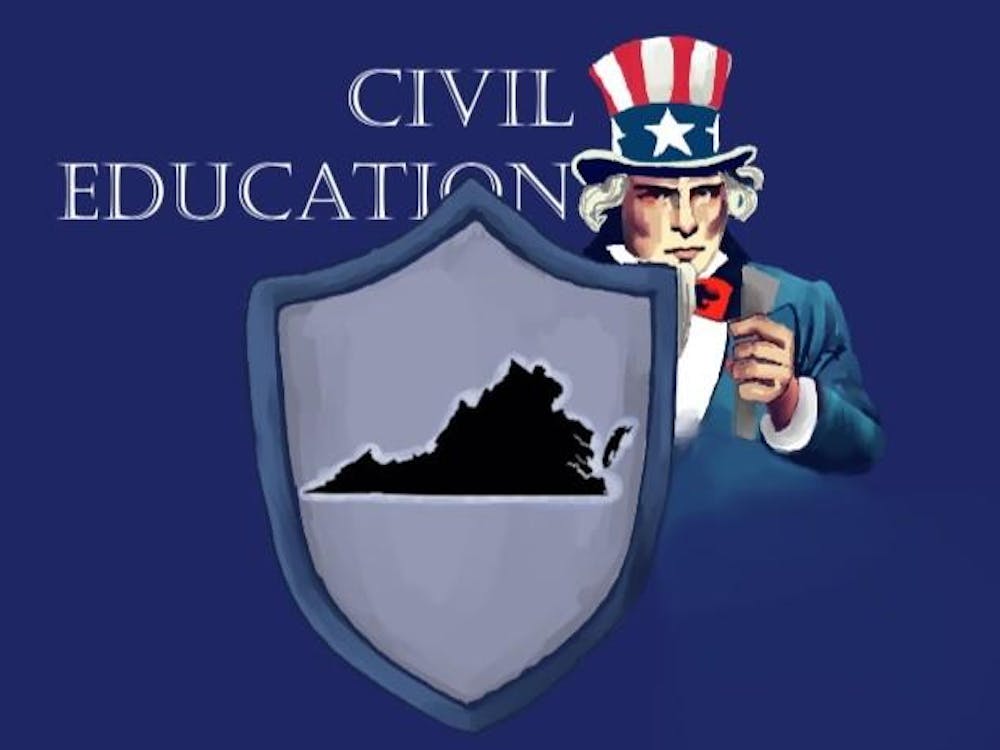Last March, the editorial board wrote an editorial against the removal of the Robert E. Lee statue from Emancipation Park, arguing that it would set a dangerous precedent for erasing darker aspects of Charlottesville’s history. What the board failed to acknowledge at the time was that this dangerous precedent would also apply to erasing the darker aspects of our University’s history. On Tuesday night, a statue of our University’s founder became a new target in the movement to do away with statues thought to be symbolic of white supremacy when a group of student protesters shrouded the Thomas Jefferson statue north of the Rotunda. Demonstrators, carrying signs which read “Thomas Jefferson is a racist and a rapist,” demanded justice and called for the removal of the Jefferson statue.
Nobody denies our University’s history with slavery, and nobody is proud of it. The University should continue to acknowledge its past and find ways to remember its history, as it has done in recent years with on-going initiatives such as the renaming University buildings and the Memorial to Enslaved Laborers. Although no amount of renaming and memorials will ever be enough to truly capture our University’s dark past, these types of initiatives offer us unique ways to contextualize it.
An important thing to consider when discussing the call to remove the Jefferson statue, however, is the result which emerges as a direct consequence. While it might make sense from an ideological standpoint to call for the removal of the Jefferson statue, the interplay with other forces in our current socio-political context may muddle the results in a way that’s actually undesirable for the protesters. One of the main arguments against the removal of the Lee statue was the implication that it would send us down a “slippery slope” of frenzied hysteria, where every monument to American leaders would be subject to removal. Of course, most people see through this argument as a brazen false congruency — there are a variety of important factors which distinguish figures deserving of commemoration such as George Washington and Thomas Jefferson from figures deserving of condemnation such as Robert E. Lee. However, the collective eye-roll at the brashness of this claim has been completely undermined by the call to remove the Jefferson statue. It’s ironic that right when the national push to remove Confederate statues is beginning to generate substantial momentum, people who are ostensibly allies of the effort would do something that could conceivably throw a wrench in the works. In their inflexibility, the protesters are, in fact, only strengthening the cause of their opponents.
When it comes to Thomas Jefferson, recontextualization should not be immediately discarded. Recontextualizing the Jefferson statue offers members of the University community an opportunity to look at the life of its founder from a different perspective. It also allows for the incorporation of different narratives instead of highlighting any single one. Completely doing away with Thomas Jefferson’s image, however, should be out of the question. Although a slave owner, Jefferson is one of the Founding Fathers of our nation — a nation which was founded on individual rights and liberty, a foundation which will continue to expand to include more people than ever imagined. Just as our community increasingly seeks to recognize his dark aspects, we should seek to recognize his good ones.
Engaging with our University’s dark past is a perennial task. Acknowledging and recontextualizing the past will offer us a chance to keep progressing as both a community and an academic institution. It is important to not act impulsively and consider all the different ways our community can atone for the past. Tuesday’s demonstration offered us an opportunity to stop and take a moment to reevaluate the social progress we are making as a community — and for that, we thank the protesters.







